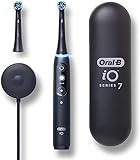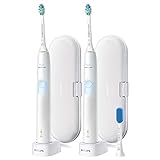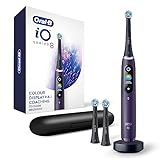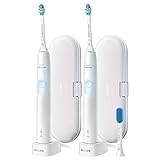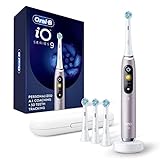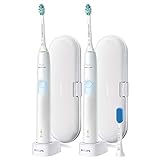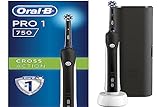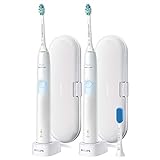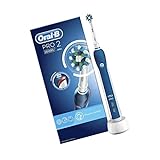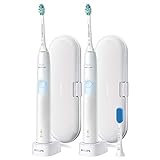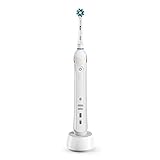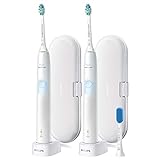Philips Sonicare ProtectiveClean 4300 vs Sonicare ProtectiveClean 5100 - Where are the differences?
Where are the differences?
Let's compare the Sonicare ProtectiveClean 4300* and the Sonicare ProtectiveClean 5100* of Philips and take a look at the differences.
Cleaning
Some electric toothbrushes have several different cleaning modes. In this comparison, only the Philips Sonicare ProtectiveClean 5100 with 3 offers cleaning modes. With the Philips Sonicare ProtectiveClean 4300 you get only one cleaning mode. In contrast to the Philips Sonicare ProtectiveClean 4300, The Philips Sonicare ProtectiveClean 4300 even recognizes which mode should be selected when switching from the attachment.
Some devices additionally offer a choice of intensity levels. There is a difference between the two devices here. Only the Philips Sonicare ProtectiveClean 4300 offers the choice between 2 intensity levels. With the Philips Sonicare ProtectiveClean 5100 you get only one intensity level.
There is no difference in the technology used. Both toothbrushes use a Sound Technology.
There is even a function to remind you to change the attachment on both devices. Doctors recommend replacing the toothbrush attachment every 3 months.
Pressure control
Too much pressure with the toothbrush can harm the teeth and especially the gums. Also, too much pressure affects the cleaning result. To remedy this, many electric toothbrushes offer an imprint control. Both the Philips Sonicare ProtectiveClean 4300 and the Philips Sonicare ProtectiveClean 5100 offer a sensor for pressure control.
the Philips Sonicare ProtectiveClean 4300 provides a visual notification. If too much pressure is applied, a light lights up in the process.
Timer and cleaning time
Both electric toothbrushes have an integrated timer for the correct brushing time. The time for the optimal brushing time is 120 seonds for both devices. There is also a split timer at 30 seonds for both toothbrushes. The timer works for the two devices with vibration.
Battery
The battery life of the two electric toothbrushes is identical with up to 14 days. A longer battery life is particularly interesting for travel, where power is not always available. However, this is still a problem with very few toothbrushes. Some devices even offer a travel case with a built-in charging function.
